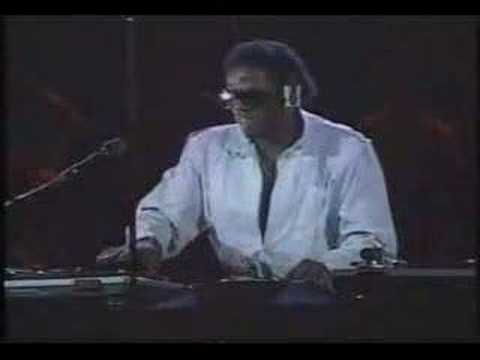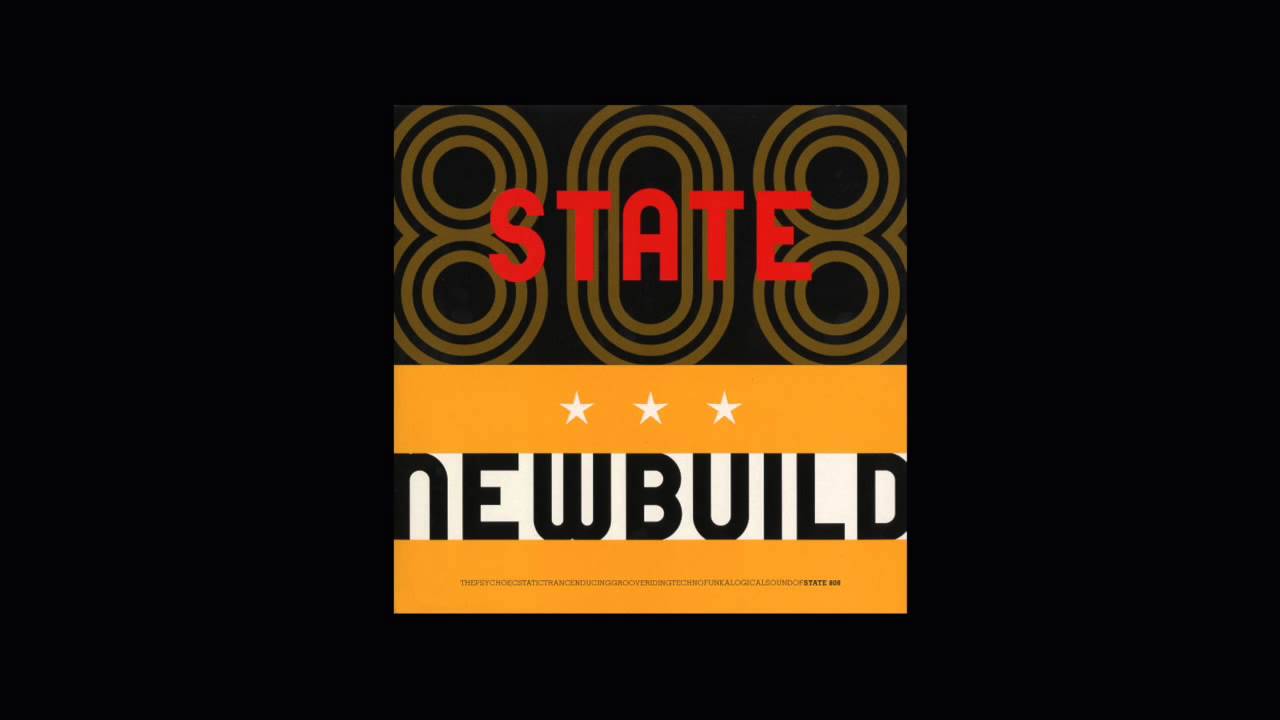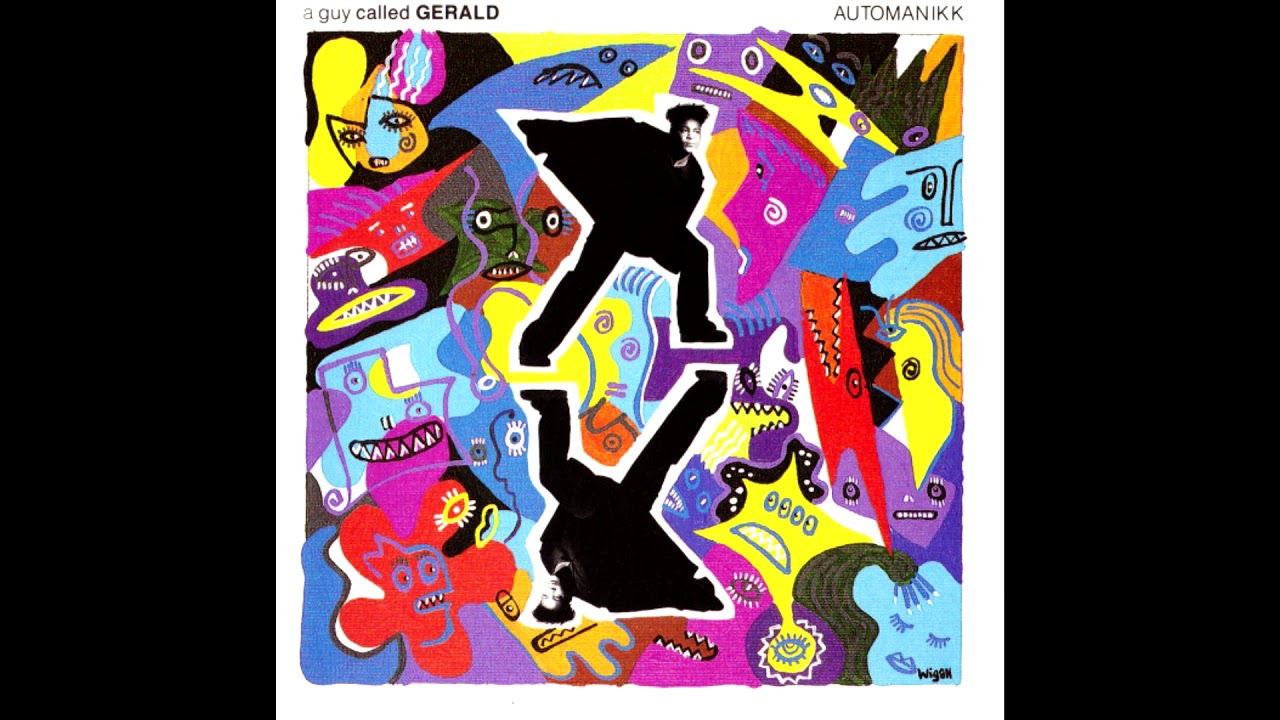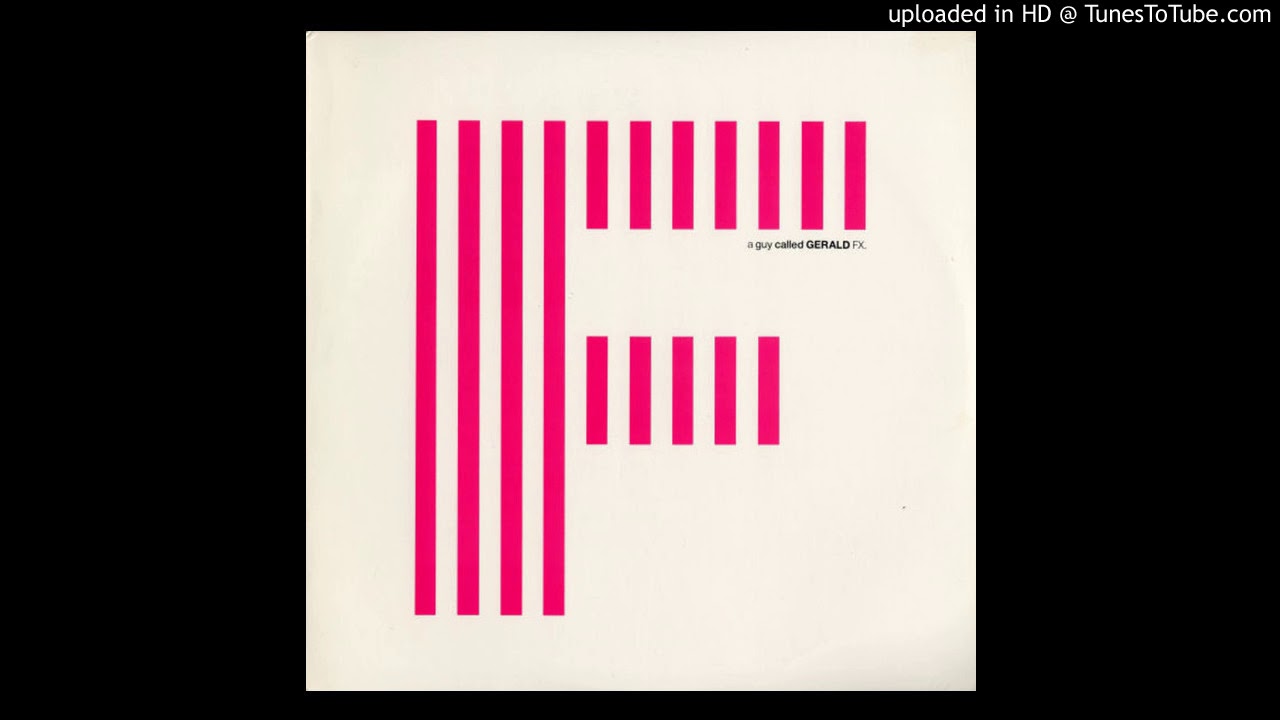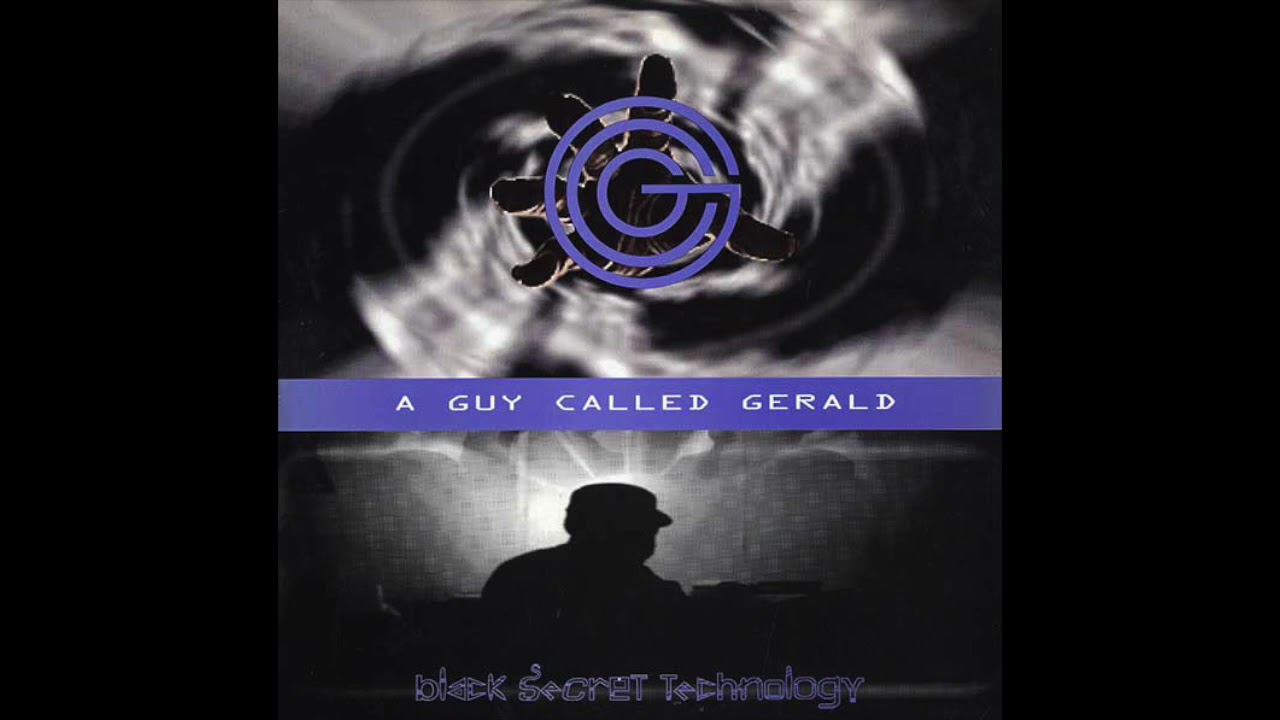It is hard to speak about some cult figures without coming across like a complete fan boy. Even more so, if the person in question is not only a leading figure of the early UK acid house scene; the author of ‘Voodoo Ray’, arguably one of the most influential dance music tracks of all time; but also one of the pioneers of early breakbeat science, who in 1995 delivered Black Secret Technology, one of the most singular jungle albums ever released. Luckily, in the case of Gerald Simpson, aka A Guy Called Gerald, it becomes much easier when you actually get to speak with them, and realise how nice they are in person, seemingly unaltered by their awe‐inspiring legacy.
The Mancunian producer has always been a vocal promoter of electronic music artistry and an early adopter of the live set format. Despite his unparalleled impact on the development of UK dance music, his icon has been somewhat overshadowed by some of his more vociferous contemporaries. Instead of being in the spotlight, he preferred to spend time in the "engine room", as he puts it. For the past 33 plus years, he has stayed true to his calling as an explorer of sonic possibilities without relying too much on the market of nostalgia. We sat down on a scorching Wednesday afternoon for a Zoom chat to discuss his musical origins, 808 State and ‘Voodoo Ray’, ongoing legal issues, jungle, the reissue of his Trip City soundtrack and current affairs.
Gerald Simpson is not a chatterbox. He prefers to form his thoughts attentively, reiterating his ideas more succinctly whenever he can. We manage to break the ice as soon as his partner offers him a cup of tea.
Born in 1967, the young Simpson was bitten by the jazz bug early on, and would walk around Manchester listening to Toshiyuki Honda and Brazilian jazz on his Walkman. He soon developed a special taste for electronic music and anything obscure, obsessing over releases by Walter/Wendy Carlos, Jean Michele Jarre and Vangelis; mostly "space music", as he describes it. His interest in electronic music grew fast after he had discovered the world of studio production. He began experimenting with tape edits and loop manipulations, but it was all really time‐consuming. Following a Herbie Hancock show, where he was exposed to GrandMixer DST scratching live, he started DJing at the Manchester Dance Centre where he attended contemporary and jazz dance classes.
He bought a very basic drum machine from an acquaintance and started programming bass lines, snare and hi‐hat patterns. When he exercised, he would use it for warm ups, speeding it up with every repetition. He recalls how this ignited his interest in rhythm programming and propelled him down the rabbit hole of production. He would plug in the drum machine, scratch along making a pseudo‐bass line, and record everything on tape.
Steering away from the local dance scene, he bought himself a synth, some FX pedals, a Tascam 4‐track recorder and later more gear, which he connected through his mum’s stereo system and started to develop his own recording style. "The more equipment I got, the more I learnt about the art of synching it up." These were all non‐MIDI components, so everything had to be fine‐synched by ear. It was the pre‐UK acid house period, so he had to look towards NYC, Chicago and Detroit for inspiration. The contemporary UK new wave scene and chart music did not resonate with him as it represented a different world outside of his influences. He first heard about the NYC electro funk scene and later Chicago and Detroit on a specialist import show on Piccadilly Radio. Being already familiar with the production aspect, he was amazed by how stripped‐down, dry and raw these disco‐type beats sounded in comparison with the more funky electro music he was used to. When hearing about acid house for the first time without having a clue about drug references, he initially understood ‘acid’ as a technical term. "I thought they must have meant p‐funk which was put into a batch of acid and all the melodies were burned out of it," he laughs. It was at around that time that he started his first project Jackmaster G, playing his own brand of "acid funk" and dubbing cassettes which eventually reached the DJs at Piccadilly Radio with the help of the local import shop Spinnin’ Records.
It was in one of the local record shops where he probably met Graham Massey, a musician also interested in recording technique, and Martin Price, who owned Eastern Bloc record shop and had a practice space, with whom he would first form the influential acid house outfit 808 State. At first, the pair were apparently more interested in hip hop, indie and pop music, but Simpson steered them towards the more minimalist acid sound. Once they started to understand how a 303 and 808 works, they began to take his ideas more seriously, Gerald says. The creative tension among them resulted in their debut LP New Built. He describes the recording process as a kind of "pushing and pulling" with him trying to get more acidy and the other two opting for big sounds à la Bomb The Bass.
Finally, he found a common language with Massey after acid house had started to get more traction and his acid influence made itself felt on the record. "It was a weird mismatch of people, but it came out interestingly nevertheless," says Simpson. At that time, he realised he was not gonna be the backroom boy for a chart band, which, he says, was 808 State’s goal. While recording with 808 State, he was already producing his own music without their knowledge. Fearing getting trapped creatively, he kept a look out for a place to develop his own sound. Building up his own studio where he could experiment all day long became his main ambition.
Simpsons’ era‐defining single ‘Voodoo Ray’, released in 1988 under the A Guy Called Gerald name on the infamous Rham! Records, reached number 12 on the UK Singles Chart. It would eventually became part of dance music history as one of the anthems played at the Manchester club The Haçienda. But the club, which would later become the stuff of rave legends, actually did not have any influence on its creation. It was Simpsons’ upbringing, dancing to jazz funk and electro funk as a kid and battling against other DJ crews as a member of the Scratch Beatmasters that gave birth to this "quintessential British dance track" (Greg Wilson). Despite the immense success of his debut, he remembers the late 80s as a period of trouble, with him working at McDonalds, living in a squat and fighting two legal battles – one with the 808 State management regarding the smash hit ‘Pacific State’, the other related to his legendary single released on Rham!
These were the pioneering days of the electronic dance music industry, and perhaps unsurprisingly Simpson only had a verbal agreement with Rham! Records. As Simpson tells us, the guys running the label never paid him a penny, and while the Second Summer Of Love was at its apex, he was dedicating most of his time to financial survival. He insists that the label continued to exploit his music until they closed doors in 1992 and reverted the rights over the recordings to him. In 2019, a former assistant to the original owner registered a new company called Rham Records, which did not have any rights to Simpsons’ music, but nevertheless started to make deals with distribution companies, collecting his royalties and using his name and likeness without his permission. The producer recently mounted a legal challenge which he is currently crowdfunding, but he currently cannot disclose any details, except that lawyers have been instructed and letters have been sent to the relevant parties.
Despite all the legal matters that stained his breakthrough period, he landed a record deal with a major label, hoping to create enough revenue to set up his own studio. A lot of time was spent on tours in the UK, USA and Europe, and with every return new headlines describing him as a "dance keyboard wizard" started to appear in the press. He released his second album Automanikk in 1990 with Sony/CBS, although his label wanted him to sound like the trendsetters of the day, so he started looking for ways of gaining creative freedom. It was never his plan to become a party DJ, instead he wanted to turn his energy to studio work. "I split off from the industry to go down the road of experimentation."
He recalls how at that time people in the UK would loop old Detroit tunes and call them their own. They did it without really understanding synths, but they knew how to patch samples and tunes together, he explains. Once you could patch various tracks together, it became easier for them to function as DJ tools. He believes that it was at around that time that DJ tools developed into their own genre known as UK hardcore.
Turntables became the instrument preferred both by DJs and promoters as they were more handy to carry around compared to all studio gear needed for a live set. While DJs could turn up with only a box of records, he had to bring along loads of drum machines, synths and cables. Even though it was harder to get gigs, he did not start performing as a traditional DJ until the mid‐90s, preferring the flexibility of his live setup. "The DJ world has taken over technology so much that even today if you’re playing this kind of music, you’re classed as a DJ," he says. This is why he is still reluctant to present himself as an electronic artist as he feels he would come off as pretentious.

The early 90s were a period of sonic investigation and finding new ways to record while on the road. He built his own rig, "a box of tricks", that included an Akai MPC60, two Akai S950s and an Akai s1000 connected through a line mixer. His gear started to get worn out from touring, so he would sample most of his drum machines and keyboards on floppy disks and take them on tour instead. This set up could be thought of as a proto‐Ableton Live!, which could then easily be transported between hotel rooms and venues.
Gradually, he got better at writing on the fly, sometimes even while performing. A crucial moment in his career that marked his transition from acid house to breakbeat took place in the early 90s at a gig at the Eclipse, the first legal all‐night club in the UK. He had prepared an acid house session, but the act before him was playing a high‐energy breakbeat set, so he decided to put on his headphones and jammed along to what they were playing in their DJ set. This improv would become the backbone of that night’s performance. It consisted of sped‐up hip hop breaks and dub basslines, but he took them even further, throwing raw low frequency b‐lines from his Akai S950 into the mix, while EQing the breakbeats on his mixer and adding some effervescent samples.
In a way, he discovered the philosopher’s stone of jungle there: "The sharper and more sinister the breakbeats, the harsher the sounds and the deeper the bass lines, the better the effect." This landmark performance was an approximation of his aspiration to bring his recording studio out onto the dancefloor. At the end of that night at the Eclipse, he saved everything on a sequencer, got back to the studio and started working on his early breakbeat productions that would later turn into some of the first releases on his label Juice Box. But his first original breakbeat production came even earlier in the form of ‘Specific Hate’ (1989), a roguish tribute to the 808 State guys, who did not really like breakbeats.
His epochal third album 28 Gun Bad Boy (1992), one of the first examples of jungle music that, according to Roy Spencer, brought the jungle movement out of the rave era, was released on Juice Box Records. A melting pot of influences, it was informed by his musical upbringing, ranging from jazz funk and proto‐electronic music to Lee "Scratch" Perry and George Clinton. After 28 Gun Bad Boy, he could have gone more jumpy, but instead he decided to look for his “own jazz". He wanted to prove that it was not just fast breaks with charging ragga b‐lines, and focused on melodies, ambience and sampledelia.
His ambition was to carry on the spirit of experimental artists from previous eras. Today, he considers the mid‐90s as a weird and hard time as he was looking for a way out in the studio. The more music he made, the more he wanted to escape, he says. He imagined his music as wide and big as possible, a sonic world in which he could step in and escape all the craziness that surrounded him. His goal for the next album was to show people where he had gotten after all these years of learning the art of loop, breakbeat and synth technology. The decision to release it on his own label Juice Box gave him all the creative freedom that he needed. His masterpiece Black Secret Technology was produced and recorded exactly as he had envisioned it, which was obviously extremely laborious, this is why it was a big relief when it came out.
Describing it multiple times as merely a safe space where he could exercise what he had learnt up to that point, he had no idea how cutting‐edge his fourth record would be. Getting an opinion on your music was pretty rare back then, he recalls, so you would just have to go ahead with what you wanted to do. 26 years later, the influence of his pioneering early run continues to enlighten. When I ask him how he feels about the younger generation of artists influenced by his music, such as Tim Reaper, Sherelle, Coco Bryce and Sully, he is most humble. The main difference between them is that they take inspiration from more contemporary acts in comparison with his generation. Since the mid‐90s, the drum & bass scene has splintered into many microgenres and even stagnated for a short while. There is obviously still room for improvement, he muses, as he points out to the situation in contemporary jazz where new exciting stuff has emerged in recent years. "It’s just about how you read into it," he believes.
It was in the period between 1995 and 1997 when he started using the internet that information on local music scenes became global, making everyone an insider. "Before, you had these little pockets of information, and it was exciting," he reminisces. In the last decade, pretty much all genres have developed their own microgenres, but none of them has had the chance to grow into something big. “As soon as it becomes viral, it doesn’t grow anymore." The jungle scene was one of the last ones of this kind with pirate radios, specific dances and people swapping dubplates. "It was its own system that slowly grew into something big, a process, which today practically can’t happen, because things explode on the internet and everybody has access to the information simultaneously, and they all do their own thing with it, which results in more little fragments," he argues. Maybe we should let go of the old system of "the next big thing", proposes Gerald, and use all the information to our own advantage. As an example, he tells me about an acid house DJ set where he played his early productions from the 87 to 89 period to a bunch of young people, thinking how nobody would know any of his music, only to be slack‐jawed when kids started to sing along to this rare old stuff that even their parents did not know about.
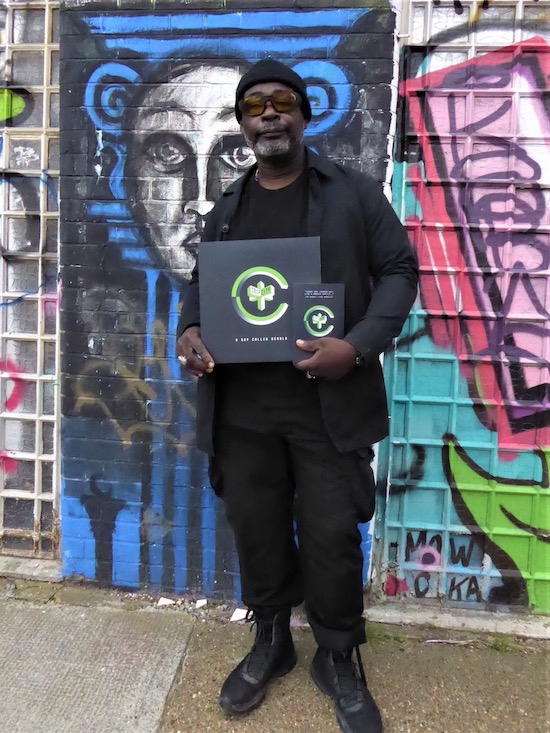
One such almost forgotten rarity is his soundtrack for the definitive acid house novel Trip City by Trevor Miller, originally released in 1989 and recently reissued on vinyl for the first time. The novel is set in the underground universe of London nightclubs and involves a fictitious designer drug known as FX. He is thankful that he had the opportunity to imagine what music would sound like when you were on this drug. It was different because for the first time he had a framework to work around. The EP comprises five acid rollers that showcase his transition into the world of sampling, with the title track functioning as the main theme. Looking back, he would have wanted to include more dialogue on the tracks to make them more literary. The process of rediscovering his old productions was a bit nostalgic, he confesses, but it was also a nice opportunity to ponder on his past. He is hopeful that maybe someday someone will grab the book and adapt it into a movie, and he will get the chance to write a more ambitious remake of his soundtrack.
He has spent most of quarantine cataloguing old releases, remastering half‐forgotten projects and uploading them on Bandcamp. There is a lot of unreleased music that he would like to make accessible via his own system, "my own blockchain", where his whole "sonic biography" would be on demand. He is very excited by the blockchain technology, not so much its currently popular uses as crypto and NFTs, but more its functionality and security. "I think the future for independent artists who aren’t interested in the mainstream is there," he says. Another lifelong dream of his, which has become more realistic with the rise of new technologies, is to develop an ultimate acoustic space where people would be immersed in technological music and maybe experience euphoria without even taking any substances. "I want to make more music because of the world we live in, and maybe even collaborate with artists whom I’ve influenced. I’m excited to see where my music could go."
Trip City soundtrack and novel are out now on Velocity Press


